Paris Futurist: Julien Dossena interview
Paco Rabanne creative direction Julien Dossena has his own take on futurism: it’s all about the rhythm of modern life
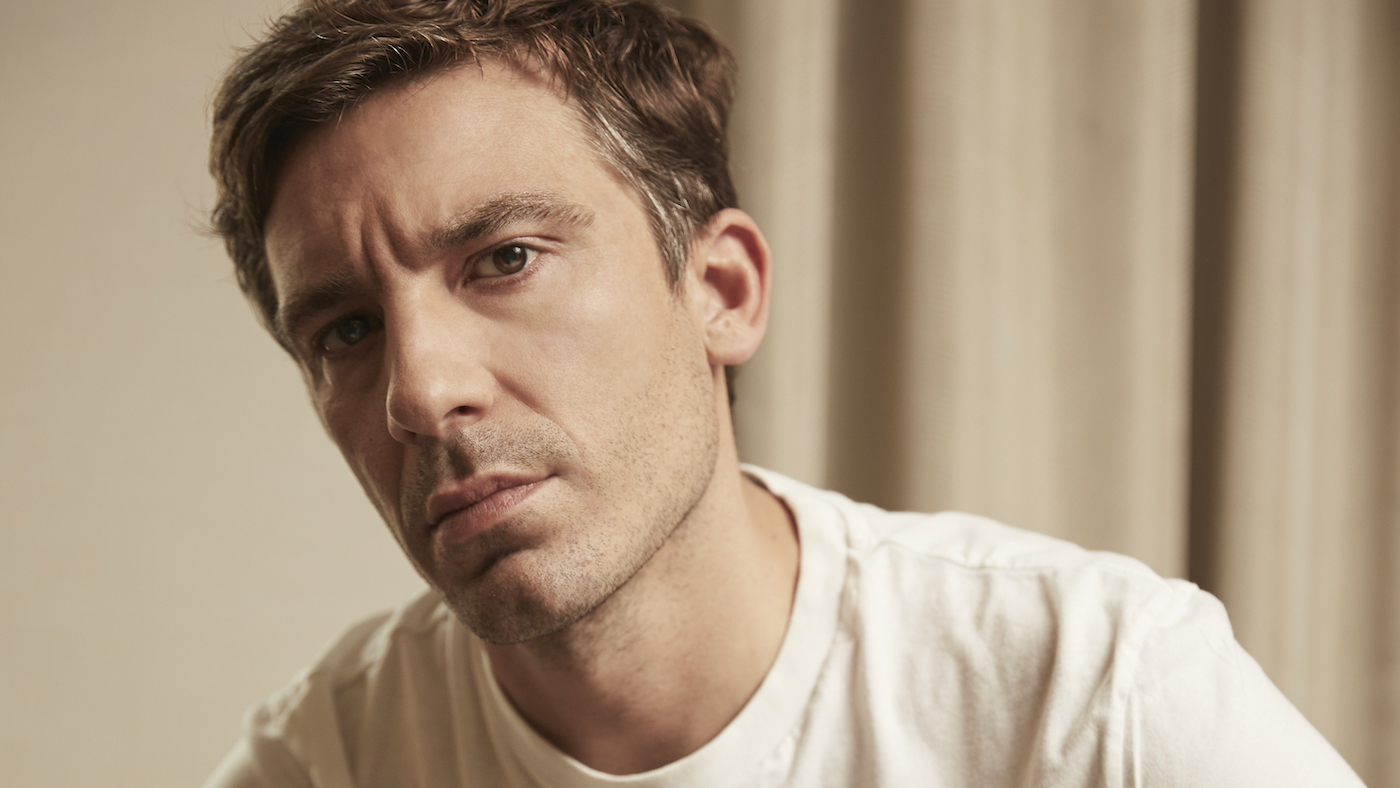
It was Marie-Amelie Sauvé who first suggested that Julien Dossena join French fashion house Paco Rabanne. Sauvé – an influential stylist, consultant, and long-term collaborator with Louis Vuitton creative director Nicolas Ghesquière – left a voicemail on Dossena’s phone, but in a Sliding Doors-like moment, the young designer almost missed out on his current role. “I remember I got a message, but I didn’t listen to it, so [Sauvé] thought I didn’t want the job,” Dossena, 36, recalls. “I knew and I loved that brand. She was the rst to see [that] what I was doing could be translated to Paco Rabanne.”
Since his appointment as creative director in 2013, Dossena has skilfully redressed Paco Rabanne as a contemporary fashion brand, mindful of its avant-garde past. “In France, it was really popular,” he says, describing his own memories of the brand and its one-of-a-kind heritage. “In the ’70s, he dressed Jane Birkin, Françoise Hardy, Amanda Lear – all these star singers. From my grandmother to fashion people in Paris, everybody knows about Paco Rabanne.”
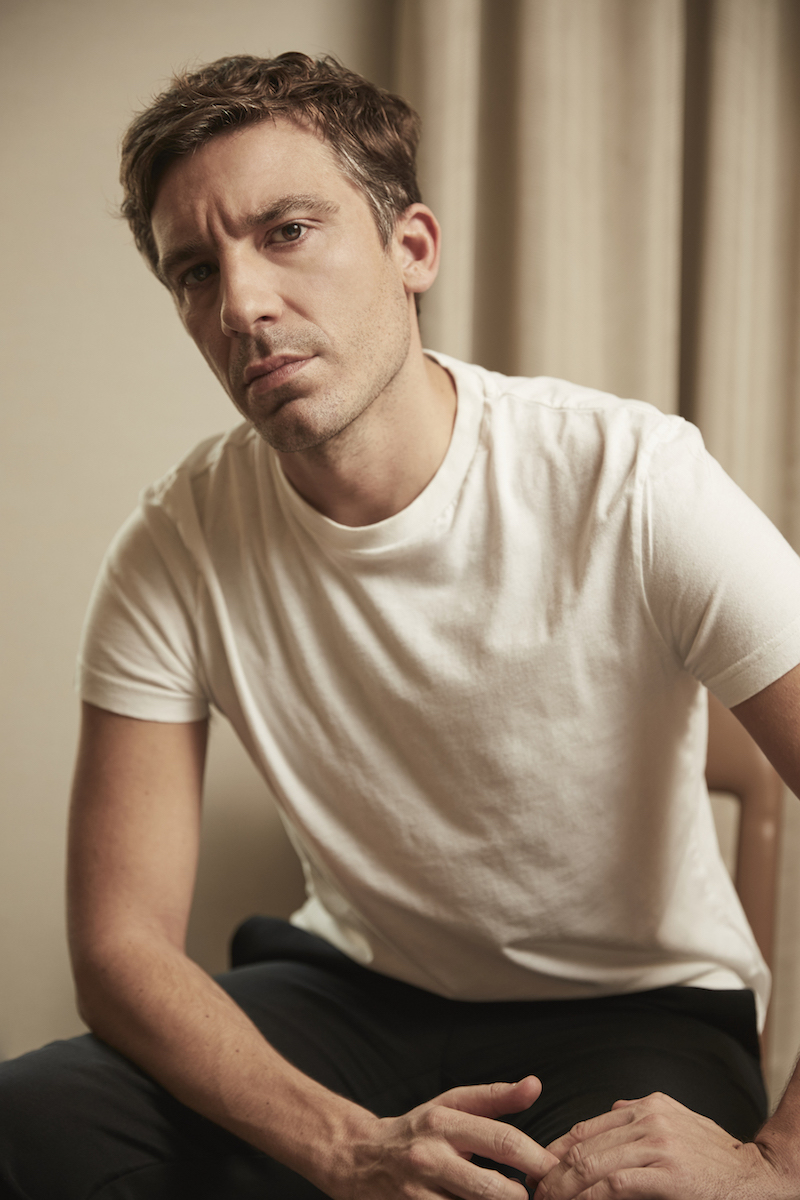
Paco Rabanne – né Francisco Rabaneda Cuervo – arrived in Paris in 1939, aged five, after fleeing his Basque hometown of Pasajes and the Spanish Civil War. His mother worked as the head seamstress and embroiderer for Cristóbal Balenciaga, and upon graduating with a degree in architecture from the École Nationale Supérieure des Beaux-Arts, Rabanne started out creating costume jewellery for haute couturiers including Hubert de Givenchy, Nina Ricci and André Courrèges.
The Week
Escape your echo chamber. Get the facts behind the news, plus analysis from multiple perspectives.

Sign up for The Week's Free Newsletters
From our morning news briefing to a weekly Good News Newsletter, get the best of The Week delivered directly to your inbox.
From our morning news briefing to a weekly Good News Newsletter, get the best of The Week delivered directly to your inbox.
In 1966, he launched his own business with ‘12 Unwearable Dresses in Contemporary Materials’. Presented by a coterie of barefoot models at Paris’ grand Hôtel George V, Rabanne’s radical creations sat somewhere between sculpture and fashion: he eschewed silks and velvets for aluminium and the thermoplastic rhodoid. “It was like an artistic performance for him,” says Dossena. “He wasn’t thinking of clothes or about shops selling couture.”
Rabanne quickly garnered worldwide interest for his futuristic designs. In 1967, The New York Times reported from the designer’s suite at Manhattan’s Doral Park Avenue hotel. Describing Rabanne as a kind of engineer for the new age who used “pliers and liquid glue instead of needle and thread”, the journalist marvelled at paper dresses, patch-worked leather jackets, and a amboyant ostrich-feather gown held together by plastic tape and metal rings.
Two years later, a British Pathé News documentary tunefully described Rabanne’s metal-dressed mannequins as “genuine can-can girls who clank-clank with every movement”. Rabanne became a household name in popular culture, out tting the era’s most exciting ingénues – Warhol con dante ‘Baby Jane’ Holzer among them. For gamine chansonnière Françoise Hardy, Rabanne conceived a gold-and-diamond micro-mini dress, which she wore to a diamond fair in Paris in 1968; this remarkably ambitious out t, the result of 2,000 hours of work, was valued at the time at more than $10 million.
That same year, actress Jane Fonda donned Paco Rabanne in her lead role in the 1968 sci- fantasy lm Barbarella, and the brand was purchased by Barcelona-based luxury group Puig. Under the proprietorship of the family-owned concern, Paco Rabanne launched a number of best-selling fragrances, including its 1969 debut scent Calandre, the glass-green bottled, best-selling Paco Rabanne Pour Homme (1973) and recent releases Invictus (2013) and Olympéa (2015). Rabanne himself officially retired from the business in 1999.
A free daily email with the biggest news stories of the day – and the best features from TheWeek.com
With his appointment in 2013, Dossena followed a quick succession of creative directors that have included German-born designer Lydia Maurer and the New Delhi-based Manish Arora. “It’s like gold that you nd in the river and that you have to brush and polish and make a jewel out of,” says Dossena of his task at the maison. “It’s so unique and, as with everything unique, you have to take it carefully.”
Since his SS14 debut, Dossena has set out to redevelop the brand’s fashion division. Instead of reworking its past successes, he zeroed in on Rabanne’s legacy as a design innovator. Dossena began by sketching a contemporary Paco Rabanne wardrobe, which today includes a Bodyline collection of athletic separates. “My first, pragmatic observation when I arrived was that I didn’t want to make a brand where women come and buy one party dress,” he explains. “That’s what Paco Rabanne was for a long time: you get your chainmail dress and you wear it sometimes, [perhaps only] for New Year’s Eve. I knew that was not relevant when building a business and a real fashion brand.”
Dossena perfected wardrobe stalwarts such as “mousseline dresses, super-sharp coats, killer pants, a really crisp white shirt”, while slowly reintroducing the brand’s fanciful flourishes. SS14 included a smattering of panelled mini-dresses shaped from burgundy, blue and black moulé Giffo moulded plastic; Dossena followed this with woven fishnet tank tops made from elongated safety pins (AW14), tailored wool blazers lined with a fabric that looked like silver foil (also AW14) and kick ares fashioned from smoky green plastic disks (AW15).
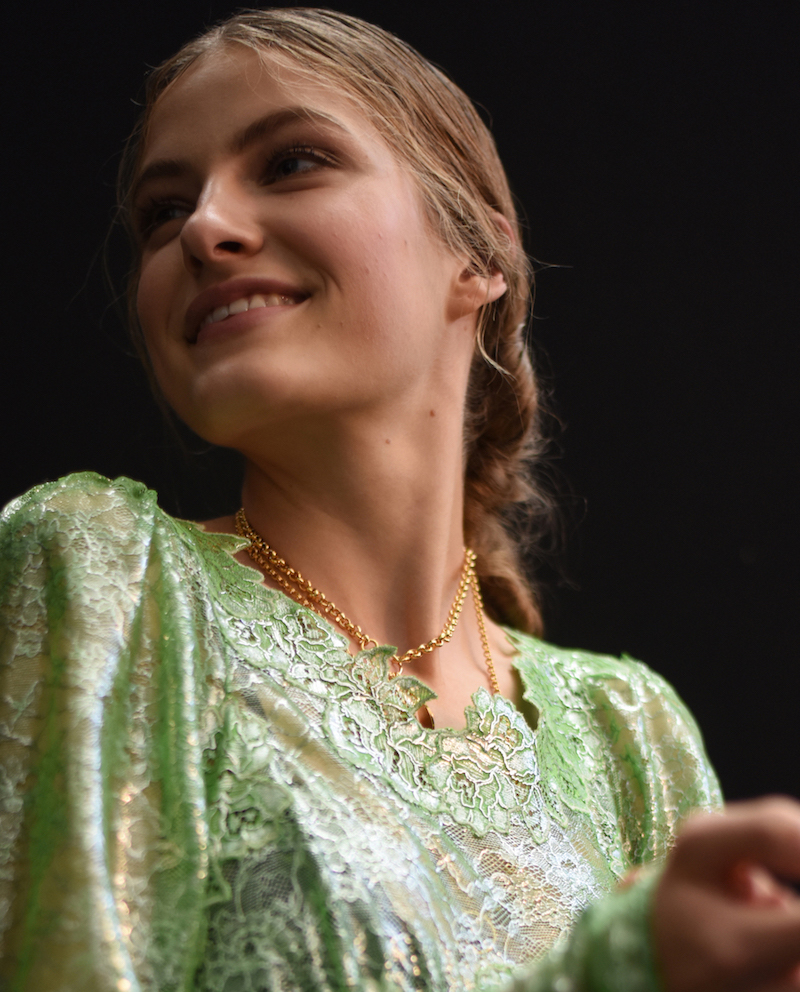
His AW16 line-up included a glossy-red chainmail dress with a waterfall neckline, worn with at space- age boots; Dossena approached the signature Paco Rabanne metal chainmail with caution, rst presenting full looks rendered in the silver and gold-coloured material in the AW17 collection. Elsewhere, he maintains Paco Rabanne’s taste for experimentation: for SS18, Dossena stamped swirling paisley prints onto chainmail, and last autumn he used dried owers cast in resin. “Most rewarding is when of women of very di erent pro les come to you and [say] they found themselves in your work,” he explains.
Dossena, who has the brooding good looks of a Nouvelle Vague lm star and favours a simple uniform of crew-neck sweater and jeans, was born and raised in Ploemeur, a small seaside town in Brittany. Here, his father owned and managed the local discotheque. “I remember being there during the day: everybody was cleaning, and it was bit sad without the lights,” Dossena says of his father’s work. “Then you came at night and it was like, ‘Bam!’ All the lights, all the people having fun. I always see [my father] as a fantasy-maker. I remember him coming home at six [am], sleeping until noon. He never drank, he never smoked cigarettes. More than fantasy, he taught us to work hard.”
Having gained a degree in art history at Paris’ École Supérieure des Arts Appliqués Duperré, Dossena moved to Brussels, where he enrolled at L’École de la Cambre, the design and architecture college whose recent alumni also include Anthony Vaccarello, currently creative director at Saint Laurent. In 2008, Dossena returned to Paris, where he applied to join Balenciaga, under the creative directorship of Nicolas Ghesquière. “That was the only brand I wanted to work for,” he recalls. “I began as an intern and was ready to work hard to get in.” At Balenciaga, Dossena progressed to become senior designer of ready-to-wear collections, specialising in tailoring. “I grew up there, learning from one of the best designers,” he says.
In 2012, following Ghesquière’s departure, Dossena left to set up womenswear brand Atto with fellow designer Lion Blau. The self-financed venture launched to great acclaim: in 2014, Atto was named an LVMH Prize nalist alongside designers Simone Rocha, Craig Green and Simon Porte Jacquemus. Shortly after, Dossena put Atto on hold to focus his energies on Paco Rabanne.
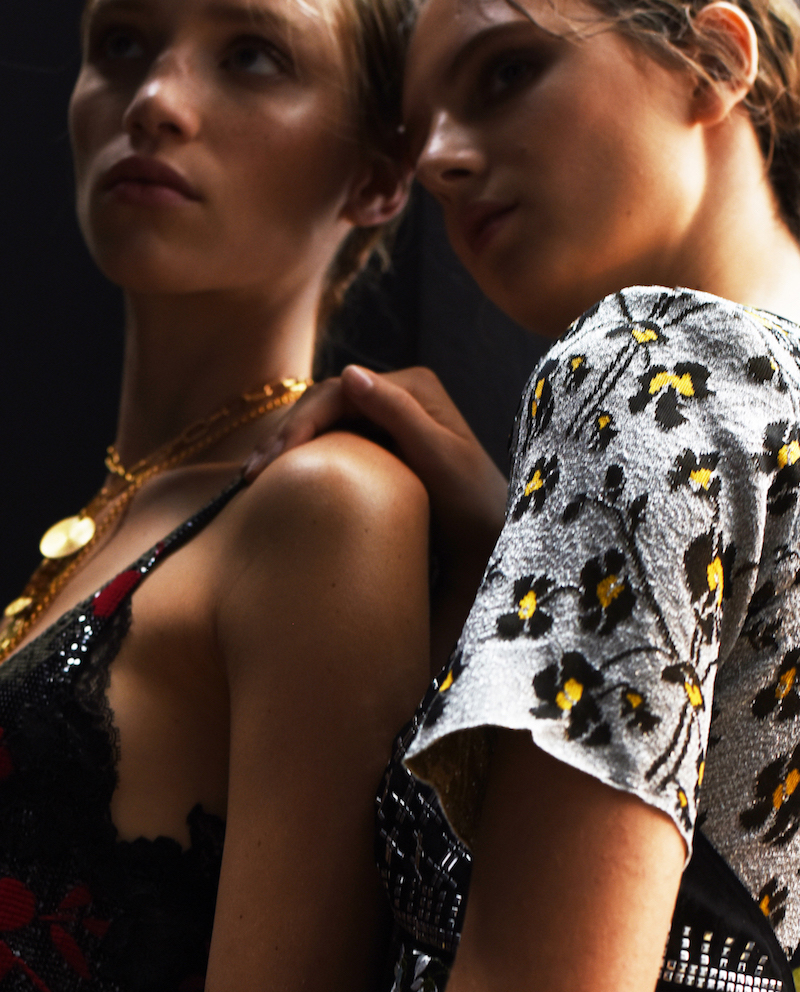
At Paco Rabanne’s SS19 Paris Fashion Week show last September, the runway was bathed in a golden glow. Dossena drew inspiration from the founder’s penchant for transcendent thought: in 1999, Rabanne published the guide The Dawn of the Golden Age: A Spiritual Design for Living, among other titles. The SS19 collection imagined the wardrobe of a modern ower-child: floor-length, lace-trimmed dresses in pale silk organza ended in a smattering of embroidered owers; a tie-dyed cotton jersey T-shirt – worn with a satin sarong skirt – was more literal with its message of mysticism, bearing the motto ‘Lose Yourself ’. Dossena used Paco Rabanne’s emblematic chainmail as a canvas for Indian woodblock prints and images of Hibiscus petals; elsewhere, metal was combined with delicate Chantilly lace. “The base and strong pillars give you the freedom to be light and to have fun,” he says of the landmark collection.
In addition to the marque’s own boutique on Paris’ rue Cambon, Paco Rabanne’s collections are today stocked at retailers including Barneys New York, Matches Fashion and Ssense. Bestsellers include Dossena’s accessories, spearheaded by bags such as the roomy Section tote, the Cage hobo, and the brand’s archival 1969 brass chain-link design. “We have always been careful about the balance of clothes and accessories that we sell,” says Dossena. “I didn’t want there to be 70 per cent [accessories to] 30 per cent of clothes. I really want all the categories to be super strong.”
This spring, he has added mirrored plastic paillettes to small cross-body bags. “Giving back nobility to these kind of materials is really interesting,” Dossena explains, echoing the beliefs of Paco Rabanne himself – the designer who always brought glamour and panache with his mélange of radical materials.
-
 Is there a Christmas truce in the Starmer farmer ding-dong?
Is there a Christmas truce in the Starmer farmer ding-dong?Today’s Big Question There’s an ‘early present’ for farmers but tensions between Labour and rural communities remain
-
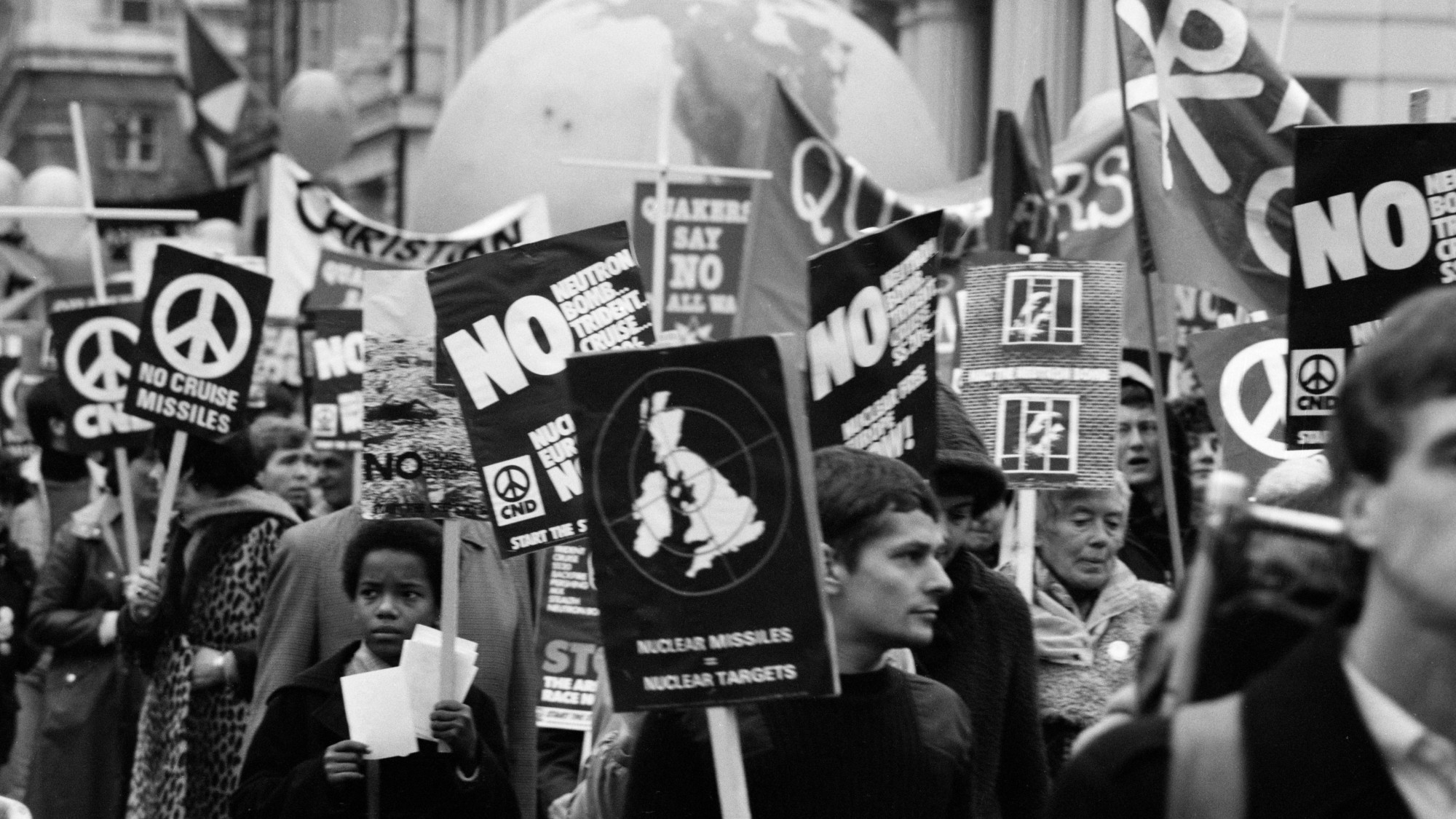 The history of US nuclear weapons on UK soil
The history of US nuclear weapons on UK soilThe Explainer Arrangement has led to protests and dangerous mishaps
-
 Tea with Judi Dench: ‘touching’ show is must-watch Christmas TV
Tea with Judi Dench: ‘touching’ show is must-watch Christmas TVThe Week Recommends The national treasure sits down with Kenneth Branagh at her country home for a heartwarming ‘natter’